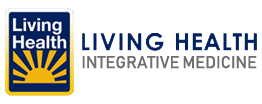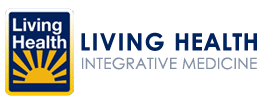Why You Should Eat Fat
Why You Should Eat Fat

Why You Should Eat Fat
Avoiding all fats is not the key to a healthy diet. In fact, when the whole non-fat craze began in the 80’s, the obesity rate in America jumped to 22-25 percent from 12-14 percent prior to the 80’s.
Why is that…?
The common mistake made by consumers was lumping (no pun intended) all fats together despite their differences and not knowing the benefits of certain fats to one’s health and wellness.
The lipid family AKA fats, is a family of compounds found in every cell, both in foods and in the human body. There are two types of fats, triglycerides and sterols. Triglyceride is the main component of fatty tissue. Sterols are fats found in the cell membrane- cholesterol being a main one.
Fats are greasy substances, solid or liquid that will not dissolve in water, referred to as oils.
Why should you not be afraid of fats?
Fat helps the body absorb vitamins A, D, E and K. Body fat serves as an energy reserve, provides warmth and cushions and protects vital organs.
Fat is a component of all cell membranes and is critical to the function and integrity of each cell. It’s considered the “gate keeper” of the cell, controlling what enters and leaves the cell. Consuming the right fats help you feel full longer after eating because of their longer digestion time, enhances the flavor of most foods and adds moisture and tenderness or crispiness to foods.
The four classifications of fats are as follows…
• Saturated fat: animal fats (except fish), coconut and palm oils
• Mono-unsaturated fats: avocado, olives, high oleic sunflower
• Poly-unsaturated fats: salmon, mackerel, herring, trout, walnuts, and sunflower seeds
• Hydrogenated fats/trans fats: chemically processed oils (soybean or cottonseed)
Recommendations:
• Eat between 25-35% of your total daily calories as fats from foods like fish, nuts, and vegetable oils. A 2,000 calorie diet should include no more than 45-66 grams of fat a day.
• Limit saturated fats to less than 7% of your total daily calories. A 2,000 calorie diet, should eat less than 140 calories of saturated fats.
• Avoid trans fats and hydrogenated fats which can increase cholesterol levels. Foods high in trans fats and hydrogenated fats are store bought salad dressings, processed snack foods and fast food.
• Ensure daily intake of 500 milligrams of Omega-3 essential fatty acids (EFAs). Omega-3 and Omega-6 EFAs are essential because they cannot be made in the body and must be obtained from the diet. EFAs can help lower the risk of heart disease, support brain health, nerve function and help regulate the inflammatory process. Good sources of EFAs are salmon, trout, sardines, flax and chia seeds, avocadoes and nuts such as walnuts and almonds. (Check out our Gluten Free Protein Bar Recipe for a recipe that has healthy fats!)
Fats are mainly digested in the small intestine with the help of bile. The gallbladder releases bile and then breaks the fats down to fatty acids. Fatty acids are absorbed into the bloodstream, travel to the liver and tissues that need them.
Cholesterol seems to get a bad rap but in reality is needed for many body processes. Cholesterol helps digest fat, build cells, makes vitamin D and hormones. Total cholesterol levels should range between 150 and 200 on a blood panel.
Too low is not beneficial and of course, too high of levels can cause issues. Cholesterol circulates in the blood in two forms, LDL and HDL. LDL takes cholesterol from the liver to wherever it is needed in the body. LDL is known as the “bad” cholesterol due to the possibility of high levels building up in artery walls. HDL, known as the “good” cholesterol, picks up excess cholesterol and takes it back to the liver. It is beneficial to have high levels of HDL, greater than 55 on a blood panel.
Embrace the fat family, make the right choices and your body and brain will thrive! Call or visit us today to learn more!


